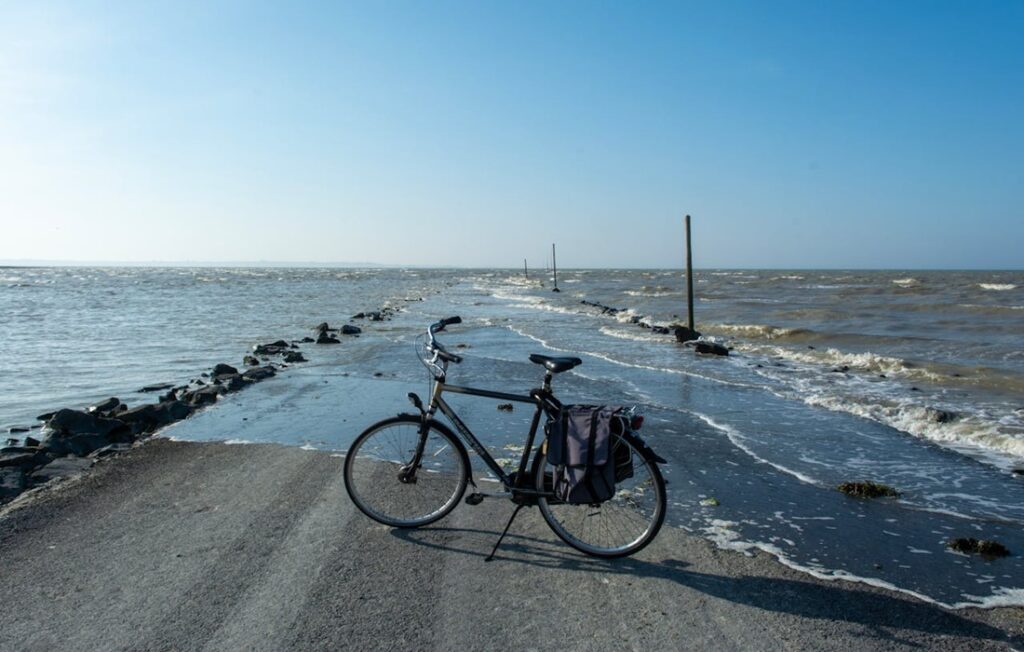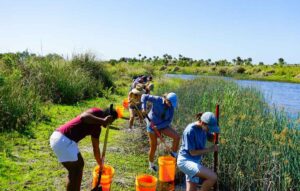What’s your favorite vacation destination?
If your first thought was the beach, you’re not alone. In fact, in a global survey from the travel company Expedia.com, 52% of respondents named the beach as an upcoming holiday destination, and 33% of those surveyed said that if given only one vacation opportunity for the year, they would choose to go to the beach over visiting family. Now, we’re not here to comment on family drama; only to say that the beach is a big draw, and not just for vacation, either.
Almost 40% of the entire U.S. population (approximately 127 million people) live near the coast, and those communities are some of the wealthiest and most powerful in the country. In fact, if the coastal counties inhabited by those 127 million people were their own independent country, they would have the third most powerful economy (based on GDP, a.k.a., the total market value of all goods and services) in the world; outpaced by only the United States and China.
Suffice it to say, our coasts are very important. We rely on them for tourism, manufacturing, shipping, and so much more. Most of the food grown for human consumption in the United States comes from the coast. We rely on the coastal growing regions to feed ourselves.
Unfortunately, those same coasts we rely on are being lost at a rapid rate.
How We Know About Rising Sea Levels in the First Place
In 1992, scientists launched a satellite into space in order observe the rate at which our oceans were warming. This was to test an existing theory that ocean levels across the globe were on the rise. This theory turned out to be correct.
Since the beginning of the analysis in 1992, the global sea level average has risen by nearly four (4) inches. That might not sound particularly bad—what is an inch here or there, after all?—but keep in mind that just one (1) inch of sea level rise equates to about 8.5 feet of lost beachfront along a typical coast. That means the average coastline around the world has lost 34 feet of beach in a matter of a couple of decades. However, more concerning than simply losing beaches, coastal flooding has been made significantly worse, and it’s been concluded by scientists we’ll lose another 51 – 68 additional feet of coastline by 2050.
How Is Sea Level Measured?
Sea level has been historically measured by using a tide gauge, which can often be found at ports and harbors all over the country and around the world. Also known as a marigraph or sea-level recorder, a tide gauge—as the name suggests—continuously measures the height of the surrounding water level. The oldest versions of this technology looked, essentially, like an oversized measuring stick. However, the newest version of this uses electronic devices with pressure sensors to indicate tide level, wind speed, water temperature, and more. Satellites, too, can be used to track tidal changes around the world.
Who Is at Risk?
Coastline cities and communities are the most at risk of going under (quite literally). Numerous cities throughout Florida and along the Gulf of Mexico, including New Orleans, as well as cities along both the Atlantic and Pacific coasts, such as New York, Boston, and San Francisco will be experience increased flooding and land loss as sea levels rise.
But this is by no means limited to America alone. The list of the top ten most susceptible cities to rising ocean levels includes:
- Bangkok, Thailand
- Amsterdam, Netherlands
- Ho Chi Minh City, Vietnam
- Cardiff, United Kingdom
- New Orleans, US
- Manila, Philippines
- London, United Kingdom
- Shenzhen, China
- Hamburg, Germany
- Dubai, United Arab Emirates
Why Sea Level Rise Matters
Okay, so what, our beaches get a little smaller. We can live with that, right?
Our beaches will get a lot smaller. In fact, they’ll likely shift dramatically; to the point that they are much farther inland and shaped much differently than they are today. But that’s not nearly the worst of it. Rising sea levels are a global crisis that puts the lives and livelihoods of more than one billion people at risk. Communities in affected regions are under threat of being partially or completely submerged (likely due to flooding, erosion, and other sea level-related concerns). This means entire cities and neighborhoods underwater, forcing people to move further inland, and industry along with them.
But it’s easier said than done. After all, not every country, community, or family has the resources to pick up and move; for many, money and mobility are a luxury. Global leaders at the 2024 United Nations General Assembly on this topic pointed out the need for more proactive global support from the world’s most powerful nations.
Infrastructure in these communities will also be impacted in a major way. In addition to loss of land, flooding and beach erosion can lead to saltwater encroaching (and eventually tainting) freshwater aquifers as well as the compromise and eventual destruction of critical systems, such as sewage, transportation, communication, energy.
It’s Not Just a Coastal Problem
Don’t live on a coast? Rapidly rising sea levels will impact you, too. As previously mentioned, America’s coastal communities are particularly important when it comes to agriculture, tourism, and trade. All of these are things inland communities count on to survive and thrive.
For example, let’s take a closer look at the probable impacts to agriculture and food systems. As previously mentioned, the vast majority of crops grown for human consumption are grown in states along the coasts. However, with encroaching ocean waters threatening to overtake these lands, in part or in whole, we can expect a buildup of salt in these soils. This has been shown to lead to reduced yields and crop loss due to a significant drop in soil health.
Surplus sodium in the soil can also prevent proper water infiltration, making irrigation more difficult and drought more prevalent. Salty soil is also less conducive to the spread of plant roots, meaning certain species will no longer be growable in these areas. And this doesn’t begin to cover the increased erosion, pesticide runoff, and other harmful environmental impacts this change could have.
All of this means that fresh foods will be harder to come by for communities across the country, not just those on the coasts. (And this is just one possible example!)
Global Warming and Our Oceans
We’re not suggesting that all the world’s major cities are suddenly going to become flooded tomorrow, but the truth remains that the rate of ocean level rise is quite rapidly outpacing global efforts to: a) reduce carbon emissions and reliance on fossil fuels, and b) adapt infrastructure to prepare for rising ocean levels and changes to precipitation and other weather patterns as a result of climate change.
Wait, wait, wait, wait. What does global warming have to do with this?
We could jump down a deep rabbit hole of sea ice and ocean temperature regulation, or you could take our quiz on the topic to learn more. But, to summarize:
Global oceans absorb and store a lot of excess heat. The more greenhouse gases humans produce, the more heat that’s trapped in the atmosphere, and the more heat and carbon that are absorbed by the ocean. The result? Warming ocean temperatures. This then impacts the formation of sea ice—warming waters mean the freezing and thawing cycles of sea ice are impacted and more and more ancient ice structures (e.g., glaciers) are beginning to melt—resulting in rising sea levels.
According to the World Economic Forum’s Global Risk Report 2025, “Critical change to Earth’s systems, which includes sea level rise from collapsing ice sheets, is the third-biggest threat to the world in the coming decades.”
Both our actions and inactions—the ongoing burning of fossil fuels and lack of uniform, rapid response to the global changes incited by this—are leading toward the rise of ocean levels worldwide. This will eventually result in the destruction of some of the world’s most populated and culturally and economically significant cities and regions.
What's Next?
Our oceans are rising. What do we do about it? While we can’t single-handedly reverse the changes to Earth’s natural systems, we can:
- Make a swift change to renewable energy sources.
- Develop infrastructure plans to adapt our coastal cities for the sea level rise we already know is coming (regardless of whether or not we suddenly stop producing greenhouse gases tomorrow).
- Repair habitats and ecosystems wherever possible to optimize carbon sinks—this can include agricultural land!
- Support countries, particularly those in the Global South, who will or already are experiencing the negative impacts of climate change when it comes to rising ocean levels and the resulting damage of changing weather patterns.
- Understand that rising ocean levels affect us all. This is not a one country or one coast problem. Not when our economies and global supply chains are so interconnected.
Whether you live in a coastal community or find yourself landlocked, ask your government representatives what they’re doing to address the climate and our rising oceans. Everything from adopting renewable energy to infrastructure preparation and ocean habitat restoration can help, but we need to take action right now.




